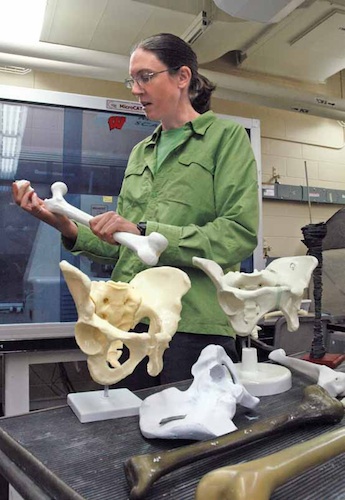
10:10 am
322 Fryklund Hall
Abstract
“Why You Can Stand on the Floor” is in large part due to the mechanics of your musculo-skeletal system, and is the primary research focus of the Bone and Joint Biomechanics (BJB) Laboratory. Osteoporosis (OP) is a debilitating disease of the musculo-skeletal system and a major health concern in an aging population. Currently, OP affects 10 million Americans, that is 1 in 2 elderly women and 1 in 4 elderly men. According to the Administration on Aging: “People 65+ represented 12.4% of the population in the year 2000 but are expected to grow to be 20% of the population by 2030.” The projected costs of OP are therefore $45 billion by 2025 an increase of $10 billion from 2004. Contributing factors to OP are loss of skeletal integrity, inactivity and the development of sarcopenia in the aged. Conversely, exercise has been shown to reduce both sarcopenia and retard bone loss in the aged. In animal models, exercise has been shown to increase skeletal integrity by 10 to 14% for the same mineral density. Solving the mysteries of how human tissue adapts to mechanical stimuli with increased strength will permit new and improved innovations in bone and joint health, disease prevention and treatment. The research goal of the BJB Lab is to develop accurate physical and virtual models of the human musculo-skeletal system for the planning and assessment of orthopaedic and rehabilitative procedures for:
- Disease prevention
- Designing biomedical devices
- Planning surgical intervention
- Enhancing computer aided surgery
Bio
Heidi-Lynn Ploeg is an Associate Professor in Mechanical Engineering, at the University of Wisconsin-Madison. Including 10 years at Zimmer, she has 30 years of experience in research and analysis of orthopaedic devices. Over the last 15 years, 47 graduate students have graduated from her lab. Her research interests include studying the nature of bone, bone growth and joint biomechanics.
